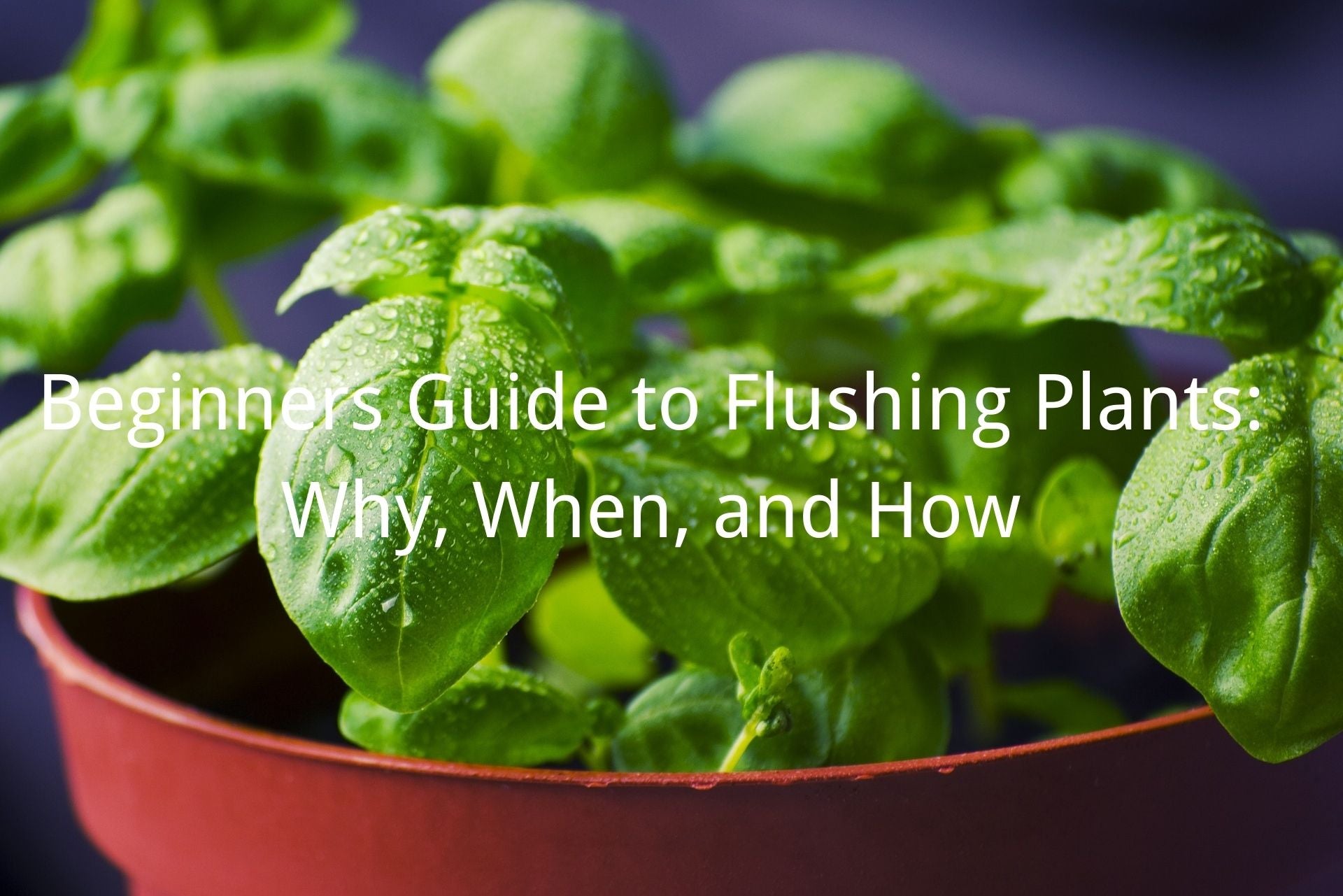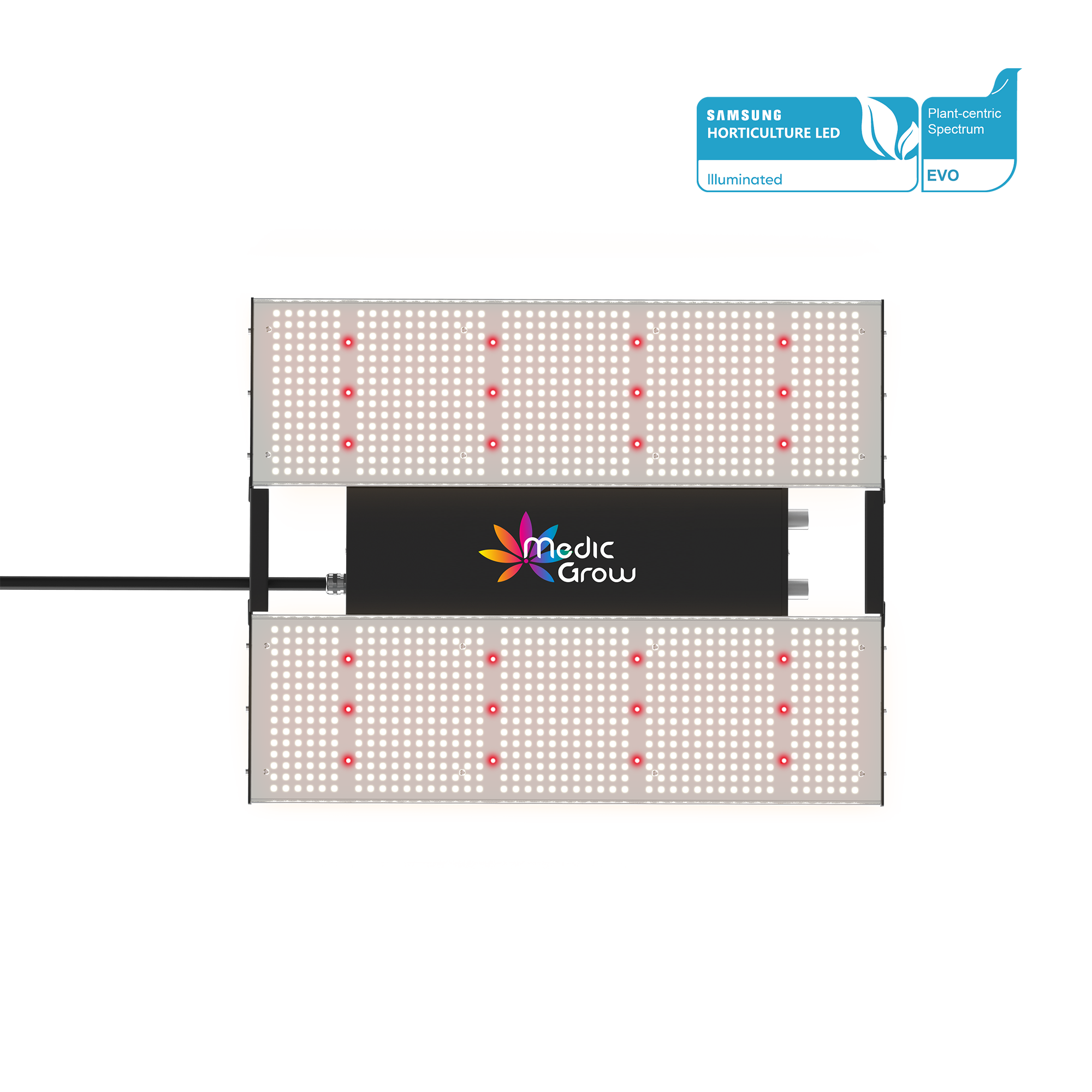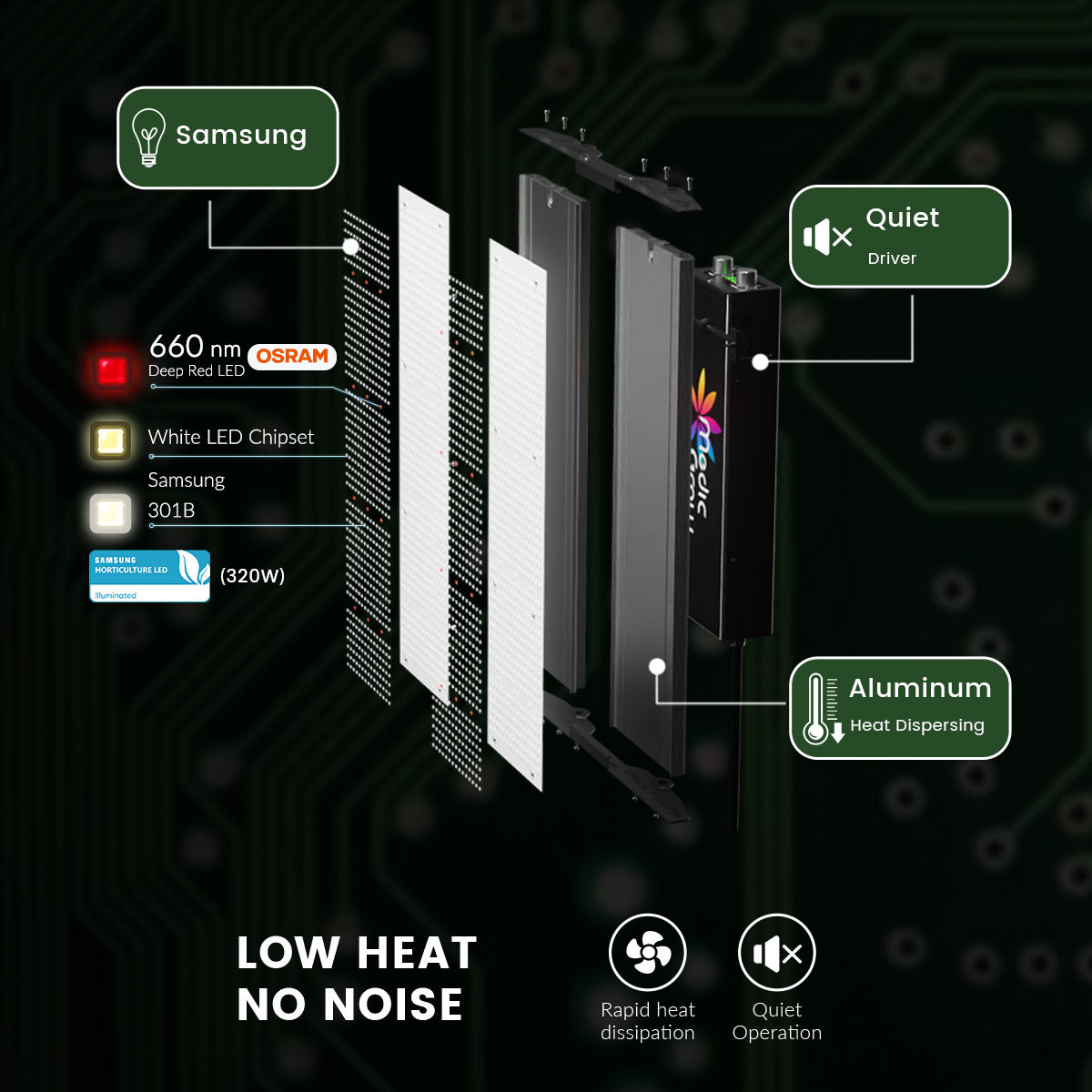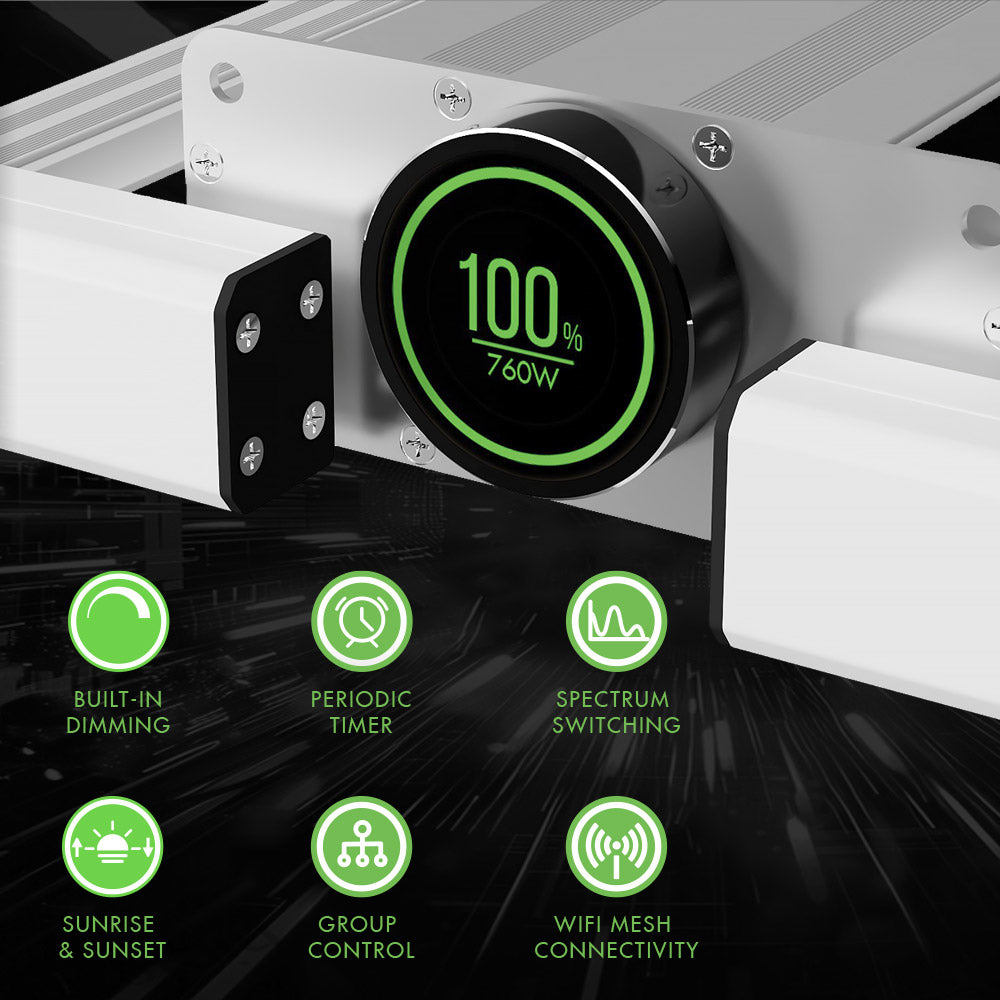
Beginners Guide to Flushing Plants: Why, When, and How
If you are a beginner to indoor growing with grow lights, you might have heard about flushing plants many times. Growers prefer flushing their plants with water to get numerous benefits.
In this article, we will talk all about flushing plants. We will see what it means, why it is necessary when you need to flush plants, and how you can do it properly. We will have an in-depth look at flushing plants so that you can take care of your plants and get maximum quality yield. Let’s begin!
- Part 1: What is Meant by Flushing Plants?
- Part 2: Why Do You Flush Plants
- Part 3: When to Flush Your Plants
- Part 4: How to Flush Your Plants
- Part 5: How to Dry Your Plants After Flushing
What is Meant by Flushing Plants?
Watering plants is essential, but flushing plants is also beneficial. Flushing plants means flooding them with water. Due to excess water, the soil is washed, and excess nutrients are removed.
You just need to give excess water to the plants so that it starts draining out from the hole at the bottom. Overwatering is done, and the water is drained from the bottom. The drained water brings extra nutrients from the soil.

Image Source: growdiaries.com
Usually, plants are flushed with plain water. Some growers also prefer flushing plants with distilled water. But when the pH is unbalanced, or the plant is suffering from the nutrient lockout, pH-balanced water is preferred.
Why Do You Flush Plants
Flushing plants has various benefits, which is why you see indoor growers flushing their plants. It is used for various purposes, including dealing with problems, improving the yield, and keeping your indoor plants healthy.
The first question that arises is why there is any need to flush indoor plants. The plants outside your home and outdoors do not need flushing, so why do indoor plants need to be flushed at certain stages of their life?
Outdoor plants are flushed through rainwater and irrigation channels. Therefore, there is no need to flush these plants.

The flushing is done automatically. But as the indoor plants are inside your house or growing tent, the rainwater cannot flush them. Thus, you need to flush them when needed.
The first reason for flushing plants is undoing nutrient lockout. When your plants suffer from the nutrient lockout, the best way to fix it is flushing. In addition, it also helps in maintaining the optimal level of pH in the soil. The second reason for flushing plants is to improve the yield.
When certain plants are flushed before harvesting, they offer an excellent yield. The quality of the yield is greatly improved. It reduces the harshness, removes the taste of chemicals from flowers/buds, and improves the taste, aroma, and potency.
Flushing plants is an important trick that experienced growers use to maintain the health of their plants and improve the final yield. It is beneficial, but the grower should know when to flush the plants. You cannot flush plants whenever you want because it will adversely affect them. Let’s see the right time to flush your plants.
When to Flush Your Plants
Accidental Over-fertilization
You may end up giving your plants more fertilizers than they need. In this case, your plant can suffer from various issues, such as nutrient lockout.
Therefore, you need to reverse the over-fertilization, and it can only be done through flushing.
When you flush your plants, the excess fertilizer or nutrients are flushed. It brings the favorable condition of the soil again.
Nutrient Lockout
Nutrient lockout refers to the problem when your plants are unable to absorb nutrients from the soil.
It is not because the soil does not have enough nutrients; instead, there are plenty of nutrients in the soil, but your plants cannot absorb them.
When plants do not get the nutrients they need, they suffer from the scarcity of nutrients. Your plants can also die if you do not treat them at the right time.
The best way to reverse nutrient lockout is by flushing plants.
When the plants are flushed, the excess nutrients are removed from the soil, and the soil is back to normal condition.
In the nutrient lockout, the nutrients create a bond with the minerals. Therefore, plants cannot absorb nutrients. When the plant is flushed, the bonding is reversed, and the nutrients are again available to be absorbed.
Keep in mind that flushing plants with cold water or plain water is not preferred in the case of nutrient lockout. It is better to use pH-balanced water.
Improper pH
The pH of the soil is imbalanced when excess nutrients and salts are present. It adversely affects the plant and causes nutrient lockout.
Growers check the pH of the soil regularly, and when they notice the pH is not at the optimal level, they flush the plant. After flushing, the pH gets back to a favorable level.
Flushing Before Harvest
Most of the time, growers flush their plants before harvest. It improves the quality of the yield. First of all, it reduces the harshness and makes the buds/flowers smooth.
After flushing plants, the plants are ready to absorb more nutrients from the soil. It improves the aroma and potency. In addition, due to flushing, the nutrients are not locked out in the soil at the time of harvesting.
Moreover, the size of the buds is also improved because they get more nutrients. Simply put, the overall quality of the harvest is improved if you flush the plant before harvesting.
Typically, the plant is flushed two weeks or ten days before harvesting. The grower should have an idea of the cycle and should flush the plant at the right time. If it is done early, it will badly affect the harvest.
Changes in the Nutrient Cycle
During the life cycle of a plant, various changes occur in the soil according to the growth stage. The soil content does not remain the same as they were in the first place.
Therefore, cleansing can be done to prevent adverse changes in the soil. It maintains the optimal state and prevents various issues, such as nutrient lockout.
When your plants are moving to the flowering stage, flushing is beneficial as it offers maximum nutrients to the plants.
How to Flush Your Plants
We have seen the benefits of flushing plants and when you should do it. Now, let’s see how you can flush watering plants.
Flushing plants is pretty easy. You only need untreated tap water if you are flushing before harvest. If the issue is nutrient lockout or pH imbalance, it is preferable to use pH-balanced water.
Before flushing and watering plants with water, make sure the pH level of the tap water is not harmful to the plants. You can use a pH meter.
Growers should keep a pH meter because it is a great tool to keep the plants healthy and maintain the optimal pH level in the soil.
Step 1:
First, you need to check whether the drain hole is clogged or not. If it is clogged, clean it.
Step 2:
Now, you need to pour water into the soil. Make sure to pour water slowly; otherwise, it will overflow from the top of the pot instead of draining the soil.
Keep in mind that water will come out from the bottom, so make sure the pot is near the place where you can drain water easily.
Step 3:
Once you flush the plant, wait for a few minutes. Now, flush it again.
You need to notice the water coming out from the bottom. Initially, the water will be very dirty, but the color will lighten after flushing, and there will be fewer particles in the water.
Step 4:
After flushing, let the plant dry. It will drain water. After a few hours, you can take the plant back to the grow area. But don’t forget to place a drip tray under it.
Now, the plant will take time to dry. It can take one day or more. Let it dry completely, and do not water the plant in the middle.
These were the simple steps for flushing plants. Once you are done with flushing, you need to dry them, and there is nothing better than putting them under grow tent kits like grow lights.
How to Dry Your Plants After Flushing
The best way to dry plants after flushing is by putting them under UV grow lights. There are various grow lights available, and you might be thinking about what type of grow light is suitable for it.
Undoubtedly, full-spectrum LED grow lights are the best for indoor plants because they have tons of benefits.

First of all, these lights do not emit too much heat energy that will make the soil dry and let plants suffer from the scarcity of water. Other types of lights, such as HIDs and incandescent bulbs, emit too much heat.
LED grow lights like Medicgrow 800-watt grow light are highly efficient; most of the electrical energy is converted into light. They have an efficiency of about 75-90%. You can install these lights in your grow area to give the light your plants need.
In addition, LED grow lights are beneficial for your plants. You can adjust the brightness as needed. They provide all the spectrum that your plants need for quality yield. In some LED grow lights, such as Medicgrow Neo 1000w LED grow light, there are different types of spectrums that the user can select as required.
Related Posts:
Are LED Grow Lights Harmful to Humans?
Learn About Nutrient Lockout: How to Fix it
Sealed Grow Room Basics: What Growers Should Know?
Featured Products
Blog Posts
Contact Us with Any Idea!
- Choosing a selection results in a full page refresh.
!
































